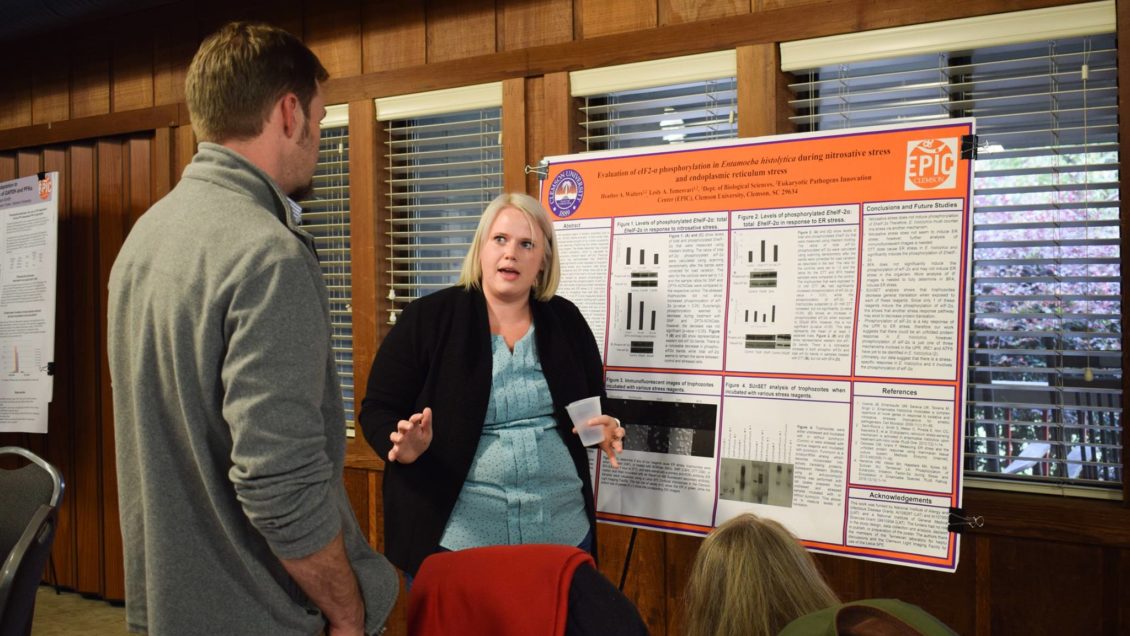CLEMSON –The 6th annual Cell Biology of Eukaryotic Pathogens (CBEP) Meeting was held on Oct. 24-26 at the Clemson Outdoor Lab. This event brought together some of the best parasitic and fungal disease researchers in the country, helping them make connections with other researchers involved in the cell biology of various eukaryotic pathogens.

Clemson University’s Eukaryotic Pathogens Innovation Center (EPIC) has hosted this meeting every year to help researchers gain new insights and bounce around ideas by discussing their own infectious disease research with others. At CBEP, researchers shared their latest findings on the deadliest diseases, such as malaria, fungal meningitis, African sleeping sickness and amoebic dysentery.
The meeting is designed for professors, research assistants, undergraduate and graduate students from across the nation to present their research through various talks and poster presentations. This relaxed forum facilitates interactions with others about their scientific ideas.
A majority of the research focused on treatment options for a diverse group of organisms responsible for diseases that threaten billions of people around the world.
Chauncey Darden, a graduate student at Meharry Medical College in Nashville, Tenn., is studying a parasite known as Trypanosoma brucei, which causes human African trypanosomiasis (HAT). An effective cure for HAT would provide large economic relief in regions affected by the disease, given that HAT threatens nearly 70 million people and numerous domestic and wild animals in sub-Saharan Africa.
“Since T. brucei only has a single mitochondrion, if we can find the regions that are important to getting to the mitochondrion, then we can design drugs that will inhibit that process,” Darden said.

Clemson graduate student Heather Walters is researching a way to combat the Entamoeba histolytica parasite that causes amoebic dysentery.
“If we are able to identify a novel pathway that the parasite uses to respond to stress that is unique to the parasite, then we can target it with drug therapy and save nearly 100,000 lives annually,” Walter explained.
Presentations like these are what CBEP organizers envisioned when they created the annual meeting in 2012.
EPIC director Kerry Smith, a professor in the department of genetics and biochemistry, has been organizing CBEP from the start. The whole premise of CBEP, he said, “was to have all these minds in one place and have a diversity of thoughts mixed together to get new research ideas that you wouldn’t otherwise have.”
For more photographs from the meeting, visit the College of Science Facebook page.
END
Get in touch and we will connect you with the author or another expert.
Or email us at news@clemson.edu

